Has anyone combined flying drone surveys with AI for counting wild herds?
14 April 2024 3:40pm
21 April 2024 4:56pm
That was one of the things I was wondering about, the height that it can resolve animals at. At some resolution it must be able to tell different animals apart.
My application is for invasive herds, or uncontrolled large animal herds such as wild horses or urban deer. In phase 2 we apply contraceptives to them to humanely reduce numbers.
24 April 2024 1:35am
I'm not an expert in this field, but have been doing some self study for a local project... Resolving animals in an image is not purely height related - but rather a combination of height and focal length (distance between the camera lens and the image sensor) (with some other factors) - Ground Sampling Distance (GSD) or Spatial Resolution is often used interchangeably (but there are slight differences). Flying low with a wide angle lens, or high with a telephoto lens can have the same GSD...
See the following for general discussions of GSD (and how to calculate it) vs Spatial Resolution:
- https://www.propelleraero.com/blog/ground-sample-distance-gsd-calculate-drone-data/ or
- https://support.pix4d.com/hc/en-us/articles/202559809-Ground-sampling-distance-GSD-in-photogrammetry or
- https://www.researchgate.net/post/Whats-the-difference-between-pixel-size-and-grid-resolution
I don't know much about the use of LIDAR for identifying animals but this seems a very interesting article to start with: https://besjournals.onlinelibrary.wiley.com/doi/full/10.1111/2041-210X.12219
As to what GSD/Spatial Resolution is needed: it depends on the animal size. It seems that 0.5cm GSD is best to recognize cattle size animals (www.sciencedirect.com/science/article/abs/pii/S0168169922000060), but elephants have been identified at 31 cm resolution in South Africa using satellite data (https://zslpublications.onlinelibrary.wiley.com/doi/full/10.1002/rse2.195).
For comparison, Google Earth images generally range from 60cm GSD and up to 20+m, depending on location (https://gis.stackexchange.com/questions/11395/spatial-resolution-of-google-earth-imagery).
Another pratical issue to deal with is that animals move - especially move fast when disturbed by low flying drones - and it could cause significant estimation issues.
Now if we can get 1cm GSD satellite images of large areas it would be REALLY helpful :-)
As an aside, my ideal scenario is to eventually replace current plane/helicopter based animal surveys with automated options. My specific study area is about 25000ha / 250km2 / 62000 acres, and 3 helicopters (with trained personnel) takes a full day to count animals - at a fairly high cost in local currency (ZAR 250k quoted). I had one estimate to do a image based survey with LIDAR, and just to image this large area at approximately 3cm GSD will take approximately a week of plane flying time for about the same cost...
MegaDetector v5 release
20 June 2022 9:06pm
23 April 2024 9:43pm
Hi @dmorris,
might you have encountered this issue while working with Mega detector v5?
The conflict is caused by:pytorchwildlife 1.0.2.13 depends on torch==1.10.1pytorchwildlife 1.0.2.12 depends on torch==1.10.1pytorchwildlife 1.0.2.11 depends on torch==1.10.1
if yes what solution helped?
23 April 2024 10:38pm
I'm sorry, I don't use PyTorch-Wildlife; I recommend filing an issue on their repo. Good luck!
23 April 2024 10:38pm
[oops, the same reply got submitted twice and there doesn't seem to be a "delete" button]
Pytorch-Wildlife: A Collaborative Deep Learning Framework for Conservation (v1.0)
21 February 2024 10:30pm
26 February 2024 11:58pm
This is great, thank you so much @zhongqimiao ! I will check it out and looking forward for the upcoming tutorial!
17 April 2024 11:07am
Hi everyone! @zhongqimiao was kind enough to join Variety Hour last month to talk more about Pytorch-Wildlife, so the recording might be of interest to folks in this thread. Catch up here:
23 April 2024 9:48pm
Hi @zhongqimiao ,
Might you have faced such an issue while using mega detector
The conflict is caused by:pytorchwildlife 1.0.2.13 depends on torch==1.10.1pytorchwildlife 1.0.2.12 depends on torch==1.10.1pytorchwildlife 1.0.2.11 depends on torch==1.10.1
if yes how did you solve it, or might you have any ideas?
torch 1.10.1 doesn't seem to exist
Ecologist Postdoctoral Research Fellow
23 April 2024 4:32pm
Monitoring Team Lead
23 April 2024 3:19pm
Using drones and camtraps to find sloths in the canopy
18 July 2023 7:39pm
22 April 2024 8:31pm
Hi Frank! Actually I have not used it yet. It is shipped to our field site but I will soon get a chance to use it. We got it with the intention of finding arctic tundra bird nests. We also got a handheld thermal binocular. I expect the latter to be more convenient and fast to use.
22 April 2024 10:01pm
Ah, ... not many sloths in the arctic ;-)
Good luck with the drone and the binos. I sure would love to try those by the way.
23 April 2024 2:37pm
We use the DJI M30T for this kind of work.
For finding heat signals of animals under foliage check out this bit of Austrian UAV developement:
You can use their open software on the DJI remotes.
Greetings from the woods,
Robin
Using Raster data?
23 April 2024 1:17pm
Introduction and Networking
22 April 2024 9:37am
22 April 2024 10:46am
Hello and welcome to WILDLABS @loveness :)
What a great intro to what you are doing and interested in pursuing! I'd like to help direct you to our resources page, where you can check out multiple open career and academic opportunities from across your region that are posted regularly by the community. Find our Resources page linked here.
Which specific areas within conservation/conservation technology are you most interested in at the moment? We have over 32 specialised groups in our community you could explore here to help guide you as you go along your career journey :)
Best wishes!
23 April 2024 12:41pm
Hello Ms Esther👋
Thank you for taking your time to reply to me with such helpful response.
I'm interested in conservation technology such as camera traps, GIS and Remote sensing, tools like EarthRanger, wildlife tracking collars, Data collection apps. I've already joined the groups just after reading your response and I'll keep visit the Resources Page to find more opportunities.
Navigating AI and good governance for INGOs
23 April 2024 10:27am
Program Manager: Integrating movement and camera trap data with international conservation policy
22 April 2024 10:16pm
ChatGPT for conservation
16 January 2023 10:04am
4 February 2024 5:39pm
Just so you know, I uploaded both a photo without a cat and one with a cat in the picture and ask if there was a cat in the picture it got it correct both times.
Uploading pictures to wildlabs doesn't seem to work at this time, so I can't show you the response, but the second answer with the cat in the picture it answered with:
"Yes, there is a cat in this picture. It appears to be in the middle of the driveway."
12 February 2024 1:05pm
You can already achieve both of them with your prompt.
Or, if you're not using ChatGPT specifically but another LLM that you can fine tune, you can use RAG or fine tuning to extra train the algorithm on the data you want it to extract information from.
With ChatGPT you can create your custom GPT now.
22 April 2024 10:15pm
In an earlier post in this discussion, I wondered how the funders are responding. Today, I stumbled on the following Request for Expressions of Interest for short term consultancy with the title 'Development of a Scoping Study on the use of AI in Evaluations for AF-TERG, CIFs E&L Initiative and GEF IEO, GCF IEU' ( My stress ) on the website of the Adaptation Fund. It's a huge fund ( USD 1 Billion ), so probably bogged down in bureaucracy and probably not the fastest to respond to new developments.
Here is the link to the EoI
Postdoc: Biologging & Camera Trap Data Integration
22 April 2024 10:10pm
Peoples Trust For Endangered Species
22 April 2024 2:57pm
Waterproofing DIY VHF transmitter
27 March 2024 8:57am
21 April 2024 9:27am
That's my kinda crazy @Rob_Appleby. Reminds my of a concept from my last job where they were trying to create strain gauge power meters that customers could self apply to their bikes. Normally this process was done in factory using special CA glue cured in 50-90c ovens. For the self applying version they were experimenting with an adhesive that had tiny metal beads in it that would heat up when a current was applied to self cure if I remember correctly.
22 April 2024 2:44pm
Now I want to be able to drop it from a drone and have it glue itself to the fur of a deer or wild hog. I am designing that now, it will have a detachable lawn dart that drops from a drone and lands on a target animal. That lawn dart delivers the payload, either a tracker or a dose of contraceptives. Then the drone comes and picks up the lawn dart again for reloading.
So the lawn dart has a small compressed air cylinder and some pneumatic style switches. When it touches down the switch actuates and the compressed air energy is used to deliver a dose of drugs and or spray some glue and ink. That can be reloaded with a bike pump and hypodermic.
22 April 2024 2:51pm
I am working on that too haha. So in my design you load the glue gun with two part Loctite, it has two separate metal rings. Glue and hardener in each ring. Then each ring has a few tiny holes drilled, and you fill the holes with a disposable plug.
When the switch is actuated the pressure inside the metals rings goes from atm to 100kPa, and sprays the glue and hardener together as the plugs blow out. The transmitter is attached to the plugs, so it is left behind and glued in place with one switch. That loctite glue is basically instant. The whole thing would not even be that traumatic to the animal. When you score a hit, you find the lawn dart glue gun again and pick it up with the drone.
Newt belly pattern for picture-matching
18 April 2024 3:57pm
19 April 2024 10:31am
19 April 2024 4:14pm
Hi Robin this is a great idea! Have been thinking about approaching the community for quiz questions. Will reach out to Xavier to ask if we can use it or if he wishes to run it on next Wednesdays VH
22 April 2024 11:27am
Thanks, and that's a match!
All these pictures are from a lab experiment and formated with AmphIdent. We took weekly belly pictures of several larvae. The aim of this google form is to validate (by comparing answers with the lab reference image base) picture-matching by human is reliable although the change of pattern can be verry quick at this life stage.
If validated there will be the need to improve existing pattern-matching solutions for in situ observations of larvae, for instance with ML and/or Human Learning (thanks Zooniverse)...
Drop-deployed HydroMoth
2 April 2024 10:20am
5 April 2024 2:04pm
Hi Sol! This seems like an awesome project! I have a few questions in response: Where were you thinking of deploying this payload and for how long?
Regarding hydromoth recorders, there have been several concerns that have popped up in my work with deploying the them at this depth because it's a contact type hydrophone which means it utilizes the case to transmit the sound vibrations of the marine soundscape to the microphone unlike the piezo element based hydrophones.
- At 30-60m you will likely have the case leak after an extended period of time if not immediately. The O-ring will deform at this depth, especially around the hinge of the housing. The square prism shape is not ideal for deep deployments you describe.
- After that depth and really starting at about 50m, a major concern is synthetic implosion from the small air pocket of the hydromoth not having a pressure release valve and lithium ion batteries getting exposed to salt water. This type of reaction would cause your other instruments to probably break or fail as well.
- You are unlikely to get a signal with a reinforced enclosure. The signal is generated via the material and geometry of the housing. The plastic will probably deform and mess with your frequency response and sound to noise ratio. If you place it against metal, it will dampen the sound quite a lot. We tried to do this, but the sensitivity is quite low with a large amount of self noise.
A side note: for biodiversity assessments, the hydromoth is not characterized and is highly directional, so you wouldn't be able to compare sites through your standard aocustic indices like ACI and SPL.
That said if you are deploying for a short time, a hydrophone like an Aquarian H1a attached through a penetrator of a blue robotics housing that contains a field recorder like a zoom recorder may be optimal for half a day and be relatively cheaper than some of the other options. You could also add another battery pack in parrallel for a longer duration.
15 April 2024 6:53am
Hi Matthew,
Thanks for your advice, this is really helpful!
I'm planning to use it in a seagrass meadow survey for a series of ~20 drops/sites to around 30 m, recording for around 10 minutes each time, in Cornwall, UK.
At this stage I reckon we won't exceed 30 m, but based on your advice, I think this sounds like not the best setup for the surveys we want to try.
We will try the Aquarian H1a, attached to the Zoom H1e unit, through a PVC case. This is what Aquarian recommended to me when I contacted them too.
Thanks for the advice, to be honest the software component is what I was most interested in when it came to the AudioMoth- is there any other open source software you would recommend for this?
Best wishes,
Sol
21 April 2024 7:10pm
Hey Sol,
No problem at all. Depending on your configuration, the Audiomoth software would have to work on a PCB with an ESP32 chip which is the unit on the audiomoth/hydromoth, so you would have to make a PCB centered around this chip. You could mimic the functionality of the audiomoth software on another chip, like on a raspberry pi with python's pyaudio library for example. The problem you would have is that the H1A requires phantom power, so it's not plug and play. I'm not too aware with the H1e, but maybe you can control the microphone through the recorder that is programmable through activations by the RPi (not that this is the most efficient MCU for this application, but it is user friendly). A simpler solution might be to just record continuously and play a sound or take notes of when your 10 min deployment starts. I think it should last you >6 hours with a set of lithium energizer batteries. You may want to think about putting a penetrator on the PVC housing for a push button or switch to start when you deploy. They make a few waterproof options.
Just somethign else that occured to me, but if you're dropping these systems, you'll want to ensure that the system isn't wobbling in the seagrass as that will probably be all you will hear on the recordings, especially if you plan to deploy shallower. For my studies in Curacao, we aim to be 5lbs negative, but this all depends on your current and surface action. You might also want to think about the time of day you're recording biodiversity in general. I may suggest recording the site for a bit (a couple days or a week) prior to your study to see what you should account for (e.g. tide flow/current/anthropogenic disturbance) and determine diel patterning of vocalizations you are aiming to collect if subsampling at 10 minutes.
Cheers,
Matt
WILDLABS AWARDS 2024 - No-code custom AI for camera trap species classification
5 April 2024 7:00pm
10 April 2024 3:55am
Happy to explain for sure. By Timelapse I mean images taken every 15 minutes, and sometimes the same seals (anywhere from 1 to 70 individuals) were in the image for many consecutive images.
17 April 2024 5:53pm
Got it. We should definitely be able to handle those images. That said, if you're just looking for counts, then I'd recommend running Megadetector which is an object detection model and outputs a bounding box around each animal.
21 April 2024 5:19pm
Hi, this is pretty interesting to me. I plan to fly a drone over wild areas and look for invasive species incursions. So feral hogs are especially bad, but in the Everglades there is a big invasion of huge snakes. In various areas there are big herds of wild horses that will eat themselves out of habitat also, just to name a few examples. Actually the data would probably be useful in looking for invasive weeds, that is not my focus but the government of Canada is thinking about it.
Does your research focus on photos, or can you analyze LIDAR? I don't really know what emitters are available to fly over an area, or which beam type would be best for each animal type. I know that some drones carry a LIDAR besides a camera for example. Maybe a thermal camera would be best to fly at night.
Conservation Tech Career Pathways - what do you want to know?
17 June 2022 1:30pm
8 May 2023 2:43am
Wildlabers,
I have been randomly trying a few things here and there for a career switch. But so far it has been in bits and pieces. Meanwhile, I have started pursuing Masters in AI and ML hoping that might bring some tractions to my career search/ switch.
Meanwhile, I keep at it while being in my current job.
Thanks,
Soumya
20 April 2024 5:36pm
Unfortunately , not yet . Still digging into it in my free time. And trying to setup a camera in my bord feeder for a mini conservation project in my back garden :)
20 April 2024 5:41pm
Hi Soumya ,
Interested to know if you are pursuing distance education in ML while at your current job. I would love to hear more about your journey on course specifics and the platform you use to complete the education, and I would love to hear if you have any recommendations based on your experiences.
Thanks,
Savi
Thoughts on RooBadge?
2 April 2024 2:55pm
5 April 2024 12:31pm
Sound deterrents to prevent collisions with Kangaroos in Australia have been sold for many years. None have been shown to work. Whether the Volkswagen device will be any better waits to be seen. Collision data will have to be collected for a while to see if the VW device has any effect on collision rate.
8 April 2024 12:49am
That is an interesting concept, and it would be great if something out there worked. In the meantime, I will try not to drive at dusk 🦘
At one point, I knew the "sonic" animal guards were the most stolen components of cars. You head in, get groceries, and come out, and they are gone. They weren't on the car long enough for me to confirm that would work
20 April 2024 2:40am
Totally agree.
Inititally sceptical until I saw Helena and Graeme were involved.
MJ
Fully-retrievable Satellite Tags for Seals?
10 April 2024 4:49pm
12 April 2024 7:25pm
Thanks, Wade! I think a number of these concerns are for pristine environments where cultural norms prohibit leaving anything on the land unnecessarily. It definitely touches on the intersection of communities wanting to conduct science, while respecting traditional knowledge and laws which I feel would be a great direction to push the field.
19 April 2024 4:40pm
Hi Courtney,
One challenge for auto-detaching tags on seals is kind of logistical/financial rather than technical. A floating tag requires a vessel to go retrieve it, and since seals may venture pretty far out to sea, it might require a pretty substantial vessel. Many seal projects I've worked with don't even have boats as a regular part of their work, so this could require a significant increase in operational costs and/or efforts. Not impossible of course, just a consideration.
Wildlife Computers has a remote-controlled release mount for seals, which would allow you to wait until they're on shore to drop it off, obviating the need for a boat. This still does leave some material behind. Making a predictable/controllable release mechanism that wouldn't leave something behind is quite a challenge for seals, where epoxy to the fur seems to be the most reliable attachment method.
19 April 2024 6:46pm
Hello @CourtneyShuert
If I am not mistaken, Wildlife Computers was developing or has developed a remote release package for such an application as has a much smaller company, Desert Star Systems. I do not know where either company stands in terms of functionality, but I think for both cases the animal still has to carry some kind of an attachment plate that will eventually be shed off. In theory (purely theory) and assuming a product exists, you/they could consider adapting the material of the plate to something that is 'sustainable' and not plastic or similar.
(edit: I noticed Kyler linked the WC product above)
4th International workshop on vocal interactivity in-and-between humans, animals, and robots
19 April 2024 3:03pm
WILDLABS AWARDS 2024 - Fostering bat conservation and citizen science in Zimbabwe: Establishing bat groups and training individuals to use bat detectors
4 April 2024 12:12pm
4 April 2024 7:44pm
Awesome project!!
My own curiosity here - how many different bat species are there in Zimbabwe?
8 April 2024 9:29am
Thank you Carly!
We have over 60 bats recorded in Zimbabwe
19 April 2024 2:16pm
Abigail. I would love to know more and potentially support the initiative. Please send me more info on [email protected]
Mass Detection of Wildlife Snares Using Airborne Synthetic Radar
7 January 2024 6:50am
19 April 2024 8:40am
Sorry, been busy and only saw this message now. Definitely am interested you can WhatsApp me 072 4725318
19 April 2024 1:22pm
I appreciate the technology, especially considering the ongoing issue of snaring. I'm intrigued to see how it will be adapted to function effectively in the dense, closed canopy rainforest, where poachers often deploy nylon snares. Please let me aware incase it will operate in this environment and the nature of the snares. More chats, +255765526628
19 April 2024 1:52pm
In my experience, the preference for trapping animals using different types of snares varies depending on factors such as traditional customs, geographical location, availability and accessibility of materials, terrain, ease of transporting materials, and the type of animal targeted, ranging from buffaloes to medium or small-sized antelope. Based on my experience working in open woodland savannah protected areas (where poachers prefer using wired snares to hunt big game and even small game) and in closed canopy rainforests (where poachers prefer using nylon snares to hunt medium to small-sized antelope). It would be great if the technology will be modified to be capable of detecting both types of snares.
WILDLABS AWARDS 2024 – MothBox
15 April 2024 5:06am
18 April 2024 10:39am
Already an update from @hikinghack:
19 April 2024 12:00pm
Yeah we got it about as bare bones as possible for this level of photo resolution and duration in the field. The main costs right now are:
Pi- $80
Pijuice -$75
Battery - $85
64mp Camera - $60
which lands us at $300 already. But we might be able to eliminate that pijuice and have fewer moving parts, and cut 1/4 of our costs! Compared to something like just a single logitech brio camera that sells for $200 and only gets us like 16mp, we are able to make this thing as cheap as we could figure out! :)

19 April 2024 12:54pm
Gotcha, well I look forward to seeing future iterations and following along with your progress!!
IgotU
29 February 2024 2:12pm
15 March 2024 1:01pm
Fantastic Nigel! Bummer to hear that production has stopped, but glad you are getting their remaining boards! I know where to come when I need some!
Cheers,
Rob
22 March 2024 12:32pm
I have couple of good use cases for this model in a conservation project here in Cambodia however limited by lack of funding. Would be happy chat if you are interested.
19 April 2024 12:27pm
I'll find you some. Just organising all of our stock of these.
Technology Trends that Would Drive Business Innovation in 2024
19 April 2024 9:27am
The rapidly evolving digital landscape and its fusion with business operations has given rise to a new buzzword: Digital Transformation. Therefore, there’s been an urgent imperative for organizations to adopt digital technologies to stay competitive. The link provides insights into technological advancements that organizations should embrace
Variety Hour: What do you want to see?
15 September 2022 12:46pm
17 April 2024 7:53pm
Steph, yes, I gathered as much myself, but I still wanted to put it on the agenda. It links to the bigger problem in nature conservation, and especially funding : all projects are required to be effective and successful, scalable, profitable and so on (not to mention the paper trail that applicants need to produce to prove it ). It makes sense from the donors' perspective, because if a project is not at least one of these, then it is a waste of money an how do they explain that to the public and the donors' donors. On the other hand, the IMHO ( H for honest ) over emphasis on this requirement is counterproductive and it does not fit in the world of tech development.
To start with the latter, as we all know, in the world of tech VC and startups, people are very used to the idea that a tech invention is not successful. I've read that if you haven't had two failed startups behind you, you're a better contender with your next one. 9 Out of 10 will fail and the remaining one will more than make up for the loss, is the idea. This way of looking at projects fits very well in this tech oriented forum.
Then the counter productive part : with a funding climate like that, who is going to take risks with tech development for nature conservation? Seriously, anybody reading this: if you raise your hand, please do get in touch, because I am curious how you look at the issue and how you deal with it. Whereas I do agree that nature conservation as a whole needs to be successful, I don't believe that the sponsors' stress on it for individual projects is successful itself. Nature's degradation has developed so far ( call me a pessimist ), that we need to take risks and find out if ( and hope that ) what works for silicon valley can work for nature.
Kudos for your attempt at the 'Technical difficulties'. I didn't know about it. Maybe we ( but I mean you, of course ;-) can tinker with the formula. Ask people to talk about how they overcame problems in some detail, because then it is a success story again. ( They could earn a badge! ) And if the recording is an issue, then don't record, or work on anonymity with temporary accounts, TOR, voice scramblers and the camera off. Maybe people are willing to write about their failures instead of doing a live presentation. That way, one has absolute control over anonymizing individuals and hiding the project from being identified. Little risk of a slip of the tongue.
18 April 2024 12:57pm
Thanks for your thoughts on the importance of sharing more about failure in our unique sector. You bring up some very valid points @Frank_van_der_Most and I think the perspective of 'learning by doing' is quite essential. I've shared below some stories I've covered from our East Africa community that touch on this and the perspective that has emerged has been on learning from these experiences and developing with more insight to solve conservation challenges more effectively. I hope you will find these interesting and useful.
19 April 2024 8:06am
Hi @Frank_van_der_Most,
great point and I will address this in my little talk next week.
Greetings from Austria,
Robin
Involve our young learners in climate change action.
27 March 2024 3:24pm
5 April 2024 4:01pm
Hi Cathy
I can't help personally but on seeing your post reached out to a contact who's previously been involved in the British Cartographic Society in case they had any ideas. Their advice:
"I would suggest that she becomes a member of British Cartographic Society (£45 or so) and then writes for/becomes an editor. Then, she will be able to apply for a funding budget for travel... as long as she also writes about the conference! It's a bit long winded, but I am sure that just being an Editor would be an advantage to her anyway."
I hope that helps (or that you find an easier way to get to the conference :D ) - good luck!
Here's their website -
6 April 2024 7:50pm
Thank you so much for this!
18 April 2024 11:40pm
I got assistance. super grateful!
Webinar: Bats and Wind Energy
18 April 2024 6:11pm




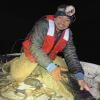
















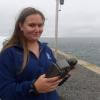



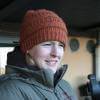

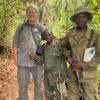
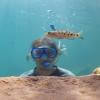

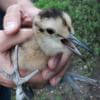



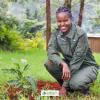
14 April 2024 6:33pm
Hi Johnathan!
Here are a few examples where UAVs and AI has been used to spot animals.
https://www.mdpi.com/2504-446X/7/3/179#:~:text=These%20vehicles%20follow%20flight%20plans,accurate%20than%20traditional%20counting%20approaches.
https://besjournals.onlinelibrary.wiley.com/doi/full/10.1111/1365-2656.13904
A google scholar search as this will find many more:
https://scholar.google.com/scholar?hl=en&as_sdt=0%2C5&q=uav+animals+wildlife+AI+computer+vision&btnG=
One thing often forgotten when considering UAVs for aerial surveys like these are that maximum height above ground is normally about 100-120m. This really limits the area one can cover.
Cheers,
Lars